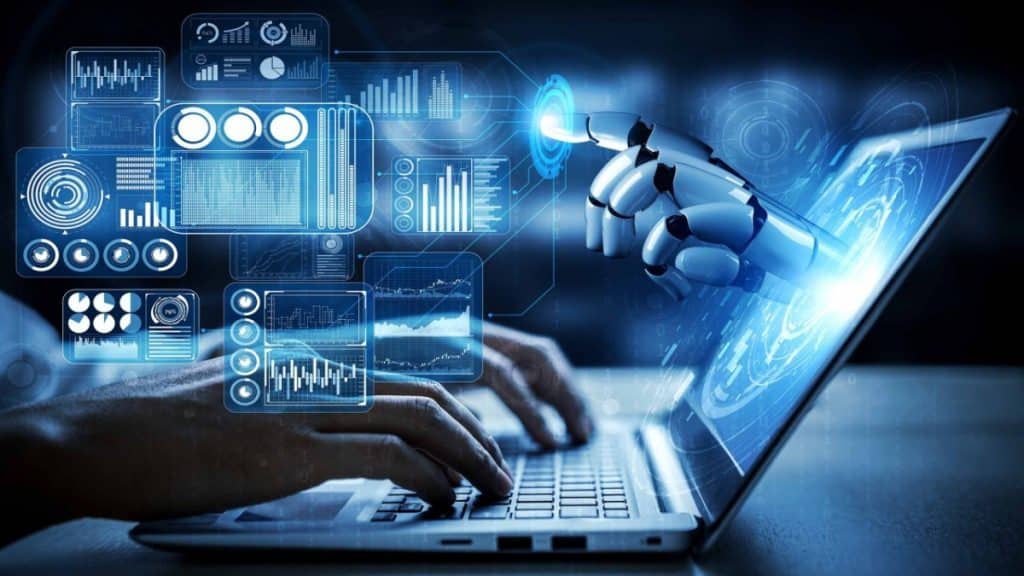AI seems to be the next big thing, and while some are wondering if it will take their jobs, others are actively using it to their advantage. Accounting firms are at the forefront of those that have already embraced AI technology with great success. How exactly are they doing it? The answer is in the details – details on what these technologies we call AI actually are. Let us have a look at what they are and what they can do.
Optical Character Recognition (OCR): is a technology that converts different types of documents, such as scanned paper documents or images, into editable and searchable data. It works by analyzing the shapes of characters in an image and matching them to corresponding text characters.
OCR uses algorithms to identify patterns and features in the characters, allowing it to accurately recognize printed or handwritten text. Once the text is extracted, it can be edited, searched, and integrated into other applications.
OCR is widely used to digitize printed documents, automate data entry, and improve accessibility. By converting physical text to digital form, OCR streamlines workflows and improves data management.
But this technology isn’t limited to paper documents. It can also read text from an image or PDF file. This is just the first step in dealing with documents. It will extract text from human-readable to machine-readable. Then we can process this text further. An example use case is to convert a PDF bank statement to CSV. This can be useful for accountants who process a large number of client bank statements. With technology, this can be done in minutes, whereas manual data entry could take hours.
Machine Learning (ML): is a form of artificial intelligence that enables computers to learn from data and autonomously make predictions or decisions, without explicit programming. This process involves feeding large datasets into algorithms, which then identify patterns and relationships within the information.
These algorithms then build models that can predict outcomes or classify information based on new input. Over time, ML models improve in accuracy as they are exposed to more data.
Machine learning is used in applications as diverse as recommendation systems, fraud detection, and image recognition. By automating the building of analytical models, ML helps solve complex problems and improve decision-making.
In accounting, machine learning is useful whenever we need to recognize unusual patterns in commonly processed documents (invoices, bank statements, etc.), which can help in fraud detection, for example.
Natural Language Processing (NLP): enables machines to understand and interpret human language. It works by converting text or speech into data that machines can process. NLP uses algorithms to analyze language structure, context, and meaning, allowing it to perform tasks such as translation, sentiment analysis, and text summarization.
By understanding language patterns (including nuances such as jokes or even sarcasm), natural language processing can extract information and respond appropriately. It can be used to analyze emails, contracts, and other documents.
Large Language Models (LLM): are advanced AI systems that generate and understand text based on large amounts of data. They work by using deep learning algorithms to analyze patterns in language from a large dataset.
This enables them to predict and generate coherent text, answer questions, and perform tasks such as translation and summarization. LLMs use their training to understand context and nuance, enabling more accurate and human-like interactions. They are commonly used in chatbots, virtual assistants, and content creation tools.
Large Language Models are often seen as “The AI” itself, by many because you can interact with it. In context of accounting, it can analyze a document and then create a summary or compare it with other texts.
Robotic Process Automation (RPA): is a technology designed to automate repetitive and routine tasks usually handled by humans. It employs software robots, or “bots,” to replicate human actions like clicking buttons, entering data, and navigating applications.
These bots follow predefined rules and sequences to complete tasks quickly and accurately. Robotic process automation integrates with existing systems without requiring major changes, making it easy to implement. It is often used for tasks such as data entry, invoice processing, and report generation. By automating these tasks, RPA reduces errors, saves time, and allows employees to focus on more strategic work.
Because tasks such as sending emails, clicking buttons in specific sequences, and processing invoices are common in accounting, Robotic Process Automation can bring great value to accounting firms.
Intelligent Document Processing (IDP): is a technology that automates the extraction, processing, and management of information from documents. It combines Optical Character Recognition (OCR), Natural Language Processing (NLP) and Machine Learning (ML) to process documents from start to finish.
IDP begins by extracting text from scanned documents or images using OCR. NLP then analyzes the text to understand its context and meaning. ML algorithms further refine this data by identifying patterns and making predictions.
This integrated approach enables IDP to transform unstructured data into structured, actionable information, improving the accuracy and efficiency of tasks such as data entry, compliance, and document management. By automating document workflows, IDP reduces manual effort and increases productivity.
All of these technologies are still quite new and definitely have their shortcomings, but they are still very useful for accounting firms. While human review is still necessary, they automate tedious, repetitive tasks, freeing up time for more important work.
